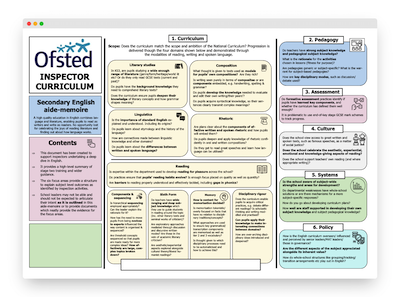The Albanese-Dutton Debate: A Deep Dive Into Their Campaign Strategies

Table of Contents
Albanese's Campaign Strategy: A Focus on Stability and Economic Management
Anthony Albanese's campaign strategy centered on projecting an image of stability and competence, particularly in economic management. This approach aimed to resonate with a broad swathe of the electorate, focusing on addressing key concerns and anxieties.
Economic Messaging and the Cost of Living
Albanese's economic messaging heavily emphasized Labor's plan to tackle the rising cost of living, a pressing issue for many Australians. His campaign consistently highlighted responsible economic management and fiscal prudence, contrasting this with what he portrayed as the Coalition's risky economic policies. He utilized data and statistics to support his claims, presenting concrete policy proposals to alleviate economic pressures.
- Specific policy proposals: Cheaper childcare, targeted wage increases for low-income earners, and investments in renewable energy aimed at creating jobs and reducing energy costs.
- Contrast with Dutton's plans: Albanese frequently contrasted Labor's responsible approach with what he framed as the Coalition's tax cuts benefiting primarily the wealthy, arguing these would exacerbate inequality and fail to address the cost of living crisis.
- Media appearances: Albanese strategically prioritized media appearances on programs focusing on economic issues, aiming to reach a wider audience concerned about their finances.
Leadership Style and "Quiet Australian" Approach
Albanese cultivated a persona of calm competence and steady leadership, aligning with the "Quiet Australian" archetype. He avoided inflammatory rhetoric and focused on delivering positive, solutions-oriented messaging. This approach aimed to appeal to swing voters seeking stability and a less confrontational political style.
- Calm demeanor: His calm demeanor during debates and press conferences was a marked contrast to Dutton's more assertive style.
- Media interviews: Interviews emphasized his experience and leadership qualities, positioning him as a reliable and trustworthy leader.
- Comparison with Dutton: The contrast between Albanese's measured approach and Dutton's more forceful style was a key element of the campaign narrative.
Targeting Key Demographics
Albanese's campaign strategically targeted key demographics, focusing on women, younger voters, and those concerned about climate change. This involved using targeted advertising and social media campaigns emphasizing policies relevant to these groups' specific concerns.
- Policies targeting specific demographics: Policies aimed at improving women's economic security and addressing climate change were prominently featured.
- Social media campaigns: Labor's digital strategy employed targeted advertising on social media platforms to reach younger voters.
- Effective outreach programs: The campaign included community events and targeted outreach programs focusing on key demographic groups.
Dutton's Campaign Strategy: Emphasis on National Security and Economic Liberalism
Peter Dutton's campaign strategy revolved around two central pillars: national security and economic liberalism. He aimed to rally support from conservative voters and those concerned about issues of national identity and economic prosperity.
National Security and Border Protection
National security and strong border protection were central themes in Dutton's campaign. He presented a tougher stance on immigration and national security issues, utilizing strong imagery and rhetoric to convey his message.
- Specific policy examples: Proposals on strengthening border security, increased defense spending, and a stricter approach to national security were highlighted.
- Media appearances: Dutton frequently appeared on media outlets known for their conservative leanings, reinforcing his message to his target audience.
- Comparison with Labor's approach: Dutton consistently contrasted his approach with what he portrayed as Labor's softer stance on these issues.
Economic Liberalism and Tax Cuts
Dutton's economic message centered on lower taxes, reduced government spending, and the importance of small business and economic growth. He focused on attracting business investment and creating a more competitive economy.
- Specific tax cut proposals: The Coalition's plans for tax cuts and incentives for businesses were central to Dutton's economic messaging.
- Plans to stimulate the economy: Policies designed to stimulate economic growth through deregulation and tax incentives were highlighted.
- Media coverage: His economic policies were frequently featured in business-oriented media outlets.
Targeting Disaffected Voters
Dutton's campaign targeted voters disillusioned with the current government and those concerned about the cost of living, but from a different perspective. He emphasized a return to traditional conservative values and a focus on fiscal responsibility.
- Policies appealing to disillusioned voters: Policies aimed at reducing the size and scope of government resonated with voters who felt the government had become too large and intrusive.
- Outreach efforts: The Coalition focused its outreach efforts on regional areas and constituencies where support for the party was strongest.
- Media targeting specific voter groups: Targeted media campaigns focused on specific issues relevant to particular voter groups.
Comparison of Campaign Strategies and Effectiveness
Comparing Albanese and Dutton's campaign strategies reveals contrasting approaches. Albanese's emphasis on stability and economic management aimed for broad appeal, while Dutton's focus on national security and economic liberalism targeted a more specific voter base. Assessing effectiveness requires analyzing polling data, media coverage, and expert commentary.
- Polling data: Tracking shifts in public opinion throughout the campaign provides insights into the effectiveness of each candidate's messaging.
- Media analysis: Analyzing media coverage can reveal the impact of each campaign's messaging and strategies.
- Expert commentary: Analysis from political scientists and commentators provides valuable insights into campaign effectiveness.
- Campaign spending: Comparing campaign spending and its impact on voter reach offers further insight.
- Effectiveness of specific strategies: Evaluating the success of targeted advertising campaigns and specific policy announcements provides valuable data.
Conclusion
The Albanese-Dutton debate highlighted contrasting campaign strategies, with Albanese focusing on stability and economic management, while Dutton emphasized national security and economic liberalism. Both leaders employed targeted strategies to appeal to key demographics, yet their differing approaches reflected fundamental philosophical divisions. Understanding these strategies provides valuable insight into the evolving dynamics of Australian politics. To further explore the nuances of the Albanese-Dutton Debate and its impact, delve into detailed election analysis and expert commentary on campaign strategies.

Featured Posts
-
 How Tom Cruise Reacted To Suri Cruises Birth A Unique Gesture
May 16, 2025
How Tom Cruise Reacted To Suri Cruises Birth A Unique Gesture
May 16, 2025 -
 Venezia Contra Napoles Ver El Partido Online
May 16, 2025
Venezia Contra Napoles Ver El Partido Online
May 16, 2025 -
 In Depth La Lakers Coverage News Stats And More Vavel United States
May 16, 2025
In Depth La Lakers Coverage News Stats And More Vavel United States
May 16, 2025 -
 Ataka Na Ukrainu Rf Primenila Bolee 200 Raket I Bespilotnikov
May 16, 2025
Ataka Na Ukrainu Rf Primenila Bolee 200 Raket I Bespilotnikov
May 16, 2025 -
 San Diego Padres Opening Series Plans Announced With Sycuan Casino
May 16, 2025
San Diego Padres Opening Series Plans Announced With Sycuan Casino
May 16, 2025
